The Buff Orpington is the model English Hen.
Bred as a dual-purpose bird to be bigger and better than the available breeds at the time, Buff Orpingtons are a big favorite in so many different backyard flocks across the world!
Quick Orpington Chicken Facts
| Origin | England |
| Colors | Black, white, blue & buff |
| Weight | 7 - 8 lbs. |
| Lifespan | 5 - 8 yrs. |
| Rate of Lay/yr. | 200 - 280 eggs |
| Egg size | Large |
| Egg Color | Brown |
| Heat Hardy | Not particularly |
| Cold Hardy | Yes |
| Broodiness | Frequent |
| Disease Susceptibility | None |
| Temperament | Calm |
| Beginner friendly | Yes |
| Cost to purchase | $4.50 |
Quick Jump
Chapter 1: Appearance of Buff Orpington Chickens
Chapter 2: History of Buff Orpington Chickens
Chapter 3: Buff Orpington Chickens for Sale
Chapter 4: Buff Orpington Chicken Egg Laying
Chapter 5: Buff Orpington Chicken Health Issues & Care
Chapter 6: Buff Orpington Chicken Temperament
Chapter 7: Feeding Buff Orpington Chickens
Chapter 8: Coop & Run Size for Buff Orpington Chickens
Chapter 9: Pros & Cons of Buff Orpington Chickens
Chapter 10: Buff Orpington Chicken FAQs
Chapter 1: Appearance of Buff Orpington Chickens
Buff Orpington chickens are a well-built breed, with a fluffy appearance but smooth feathers.
Their feet are a very light pink color, close to white, which matches their skin.
Their beak matches the color of their feet too, while their wattles and earlobes are a bright, beautiful red.
They have a single comb which has five points, which is also a bright red.
There is also a rose comb variety of Buff Orpingtons which isn’t as tall as the single comb, but these are much less common.
The Buff color of the Orpington breed was added to the American Poultry Association’s Standard of Excellence in 1902.
Their backs are curvy and give off a real “typical chicken” vibe that you likely see when a chicken appears in an animated movie.

Buff Orpington Chicken Size
Buff Orpingtons come in two different sizes:
- Bantam
- Large Fowl
Your large fowl Buff Orpington hen will weigh around 8 lbs., while your bantam will be just above 2 lbs.
That’s a pretty big bantam! For this reason, they’re pretty hard to find as they get snapped up pretty quickly when available.
Colors
The Buff Orpington, of course, is the most popular of all the Orpington chickens, but there are more!
- Buff
- Black
- White
- Blue
All four of the colors were accepted into the APA’s Standard in the early 1900’s.
The Buff Orpington, up until quite recently, was considered an endangered breed, but with the recent influx of backyard chicken owners deciding to give them a home, they have shot up in popularity, and in 2016 were no longer considered endangered.
Chapter 2: History of Buff Orpington Chickens
In our Brahma Chicken Guide we discussed “chicken fever” and how that impacted breeding practices across the world.
The Buff Orpington is a product of “chicken fever” dying down, where many people were keeping and breeding chickens simply for the novelty of it all.
William Cook, a salesman living in Orpington, England, was frustrated with this and determined to breed a superior chicken for dual-purpose - meat and egg production.
Buff Orpington Chickens Journey
Cook’s first breed was the Black Orpington in the late 1800’s which he bred from Plymouth Rock, Minorca and Langshan chickens.
Thanks to Cook’s great sales chops, the Black Orpington was an instant success in the UK.
The next chicken he worked on was the Buff Orpington, which was bred using Cochin chickens as well as Hamburgs and Dorkings.
Fun fact, the town of Dorking is just 45 minutes away from Orpington, so not too far to travel for Cook to find the chickens he needed!
In just a decade, Cook’s Orpingtons were being exported all over the world, finding their way to the United States and South Africa to name two.

Chapter 3: Buff Orpington Chickens for Sale
Buff Orpington Chicken Hatcheries
Like most birds, the Buff Orpington doesn’t seem to have hatcheries specific to the breed.
They are, however, readily available at most of the popular online hatcheries, and if you live near one you should easily be able to find them.
A Buff Orpington chicken will cost around $3.50 per bird if you were to buy more than 100, but only $4.50 per bird if you were to buy between one and five.
Availability of Buff Orpington chickens usually starts around the end of January each year, and stretches through to October, which is quite typical of most chicken breeds at most hatcheries.
You’ll want to note that if it is your first time buying chicks online, they will be shipped to you with enough food to last the trip.
You will have to pick them up at the Post Office and have a member of staff watch you physically open the box to ensure they were delivered in good shape.
Should you have any problems with your delivery, most hatcheries will be happy to send you a replacement shipment.
If you need more information on purchasing chickens from a hatchery, read our Best Hatcheries Guide here!
Chapter 4: Buff Orpington Chicken Eggs
Buff Orpington Chicken Rate of Lay
As dual purpose birds, you’ll never be short for eggs with a few Buff Orpingtons in your backyard flock!
Each Buff Orpington will lay anywhere from 200 to 280 eggs per year.
These eggs are a light brown color, and will generally be “Large” eggs, which come in at a little more than your average store bought egg.
Some Buff Orpingtons have been known to lay Medium eggs, but you’re not likely to find a Buff Orpington that lays anything other than Medium or Large.
If you’re making passive or active income from the eggs your birds produce, the Buff Orpington is absolutely the best bird for your flock!

Buff Orpington Chicken Broodiness
One slight issue with the Buff Orpington (if you do rely on their eggs) is their tendency to go broody.
However, for those that want to raise their own chicks, the Buff Orpington is the perfect fit for a backyard flock.
They will go broody relatively often, and if they do have the option to have fertilized eggs, they will make excellent mothers.
They treat their young with a lot of care, and will constantly be checking on them to ensure they fit into the flock well once they’re old enough.
Chapter 5: Buff Orpington Chicken Health Issues & Care
Buff Orpingtons are quite robust and hardy birds due to the selective breeding when creating them.
This means that they do not suffer from many of the diseases and issues that can crop up in a lot of less hardy breeds.
Despite this, their feathers are quite full (which helps a lot in the winter months) so you’ll need to make sure that they’re clean and dry most of the time.
Since their feathers are very full and dense, you’ll want to check on them with a fine tooth comb each time as you don’t want to miss any mites or lice inside their dense coat.
Because they are quite a large bird, you’ll need perching posts lower down to the ground so they don’t injure themselves when they hop off.
Their dense feathers will keep them warm in the winter months, and they’ll handle the cold weather with ease, but in the summer months they can struggle quite a bit.
Ensuring that there is plenty of cool water available and shade in your backyard will keep your Buff Orpingtons healthy throughout those warmer months.
Chapter 6: Buff Orpington Chicken Temperament
Buff Orpington birds are a pretty docile breed, and a perfect bird for a beginner backyard chicken owner.
They are a real “family bird,” and will likely follow you and your children around while you’re gardening, most likely hoping you’ll drop a treat or two their way.
They’ll also be relaxed if you want to pick them up and set them in your lap for a while, and will be more than happy for you to pet and pamper them.
Buff Orpington Chickens in the Pecking Order
Because of their docile nature, Buff Orpingtons will generally sit lower on the pecking order than most birds.
This can cause some issues with them being pushed away from the feeder and waterer, and even getting pecked at by the more assertive birds in the flock.
If you are hoping to welcome Buff Orpingtons into your backyard flock, it might be wise to pair them with other docile birds like Silkies and Cochins, because they won’t fare too well with birds that are much higher on the pecking order like the Rhode Island Red.
That’s not to say that they can’t give it back though.
The Buff Orpington has a strong peck, so make sure you and your children don’t bug them too much, because you’ll definitely know about it if she gets cheesed off.
Chapter 7: Feeding Buff Orpington Chickens
Buff Orpington chickens don’t have any specific dietary needs, meaning you’ll be fine feeding them what you feed the rest of your flock.
Chicks will need a 21% Starter Feed, which you can purchase right here! They will eat Starter from the day they’re born until they are around 8 weeks old.
Once they’re 8 weeks old, you’ll want to switch them to a 18% Grower Feed, which you can also purchase right here!
Grower is fed to pullets from 8 weeks all the way up to when they lay their first egg.
Once their first egg is laid, you’ll need to switch them to a 16% Layer Feed.
You guessed it. You can purchase Layer Feed right here!
This Layer Feed will be the main source of nutrition for the rest of their lives, but you can add in treats like Scratch, or Oyster Shell to aid in egg production.
One thing you’ll want to monitor is your Buff Orpington’s weight.
They loooooove to eat, so if you introduce one into your flock, you may want to have feeding times as opposed to free feeding.
They’re also very similar to dogs, in that they will beg for food if you’re eating outside with the chickens.
Chapter 8: Coop & Run Size for Buff Orpington Chickens
Buff Orpingtons are big chickens, remember?
But, they’re not so big that you need to drastically increase your coop size to welcome a few of them in.
Standard coops should have four square feet per bird, but we’d recommend at least 4.5 square feet per Buff Orpington, just to allow them the extra bit of space for their fluffiness.
Each perch will need around 9-10 inches of space per Buff Orpington, and you’ll want these no higher than 20 inches off the ground so they don’t injure themselves when they hop off.
As for their nesting boxes, you will be fine with the standard 12 x 12 inches of space.
Any bigger and it can encourage multiple birds to nest in the same box which discourages laying, and can also lead to cracked eggs.
You won’t need a nesting box per bird, but one for every three hens should be more than enough.
Chapter 9: Pros and Cons of Buff Orpington Chickens
| Pros | Cons |
| Great layers | Tendency to go broody |
| Docile and friendly | Can get picked on by other flock members |
| Good chicken for beginners | Don't handle heat well |
| Great with kids | Love to eat - a lot |
| Not susceptible to any diseases | Not particularly predator savvy |
Chapter 10: Buff Orpington Chicken FAQs
Q: How many eggs will a Buff Orpington hen lay per year?
A: A Buff Orpington will lay around 200 - 280 eggs per year
Q: What color are Buff Orpington eggs?
A: Buff Orpington eggs are light brown
Q: Are Buff Orpington chickens aggressive?
A: Nope! Buff Orpington chickens are friendly and docile
Q: How often do Buff Orpington hens go broody?
A: Buff Orpingtons will go broody quite often
Q: Are Buff Orpington chickens susceptible to any diseases?
A: Nope! Buff Orpingtons are particularly hardy chickens
Summary
Who needs friends when you’ve got birds like the Buff Orpington?!
These guys are some of the best chickens to have in your backyard flock, and it’s obvious why.
Their egg production is high, and when they’re not producing eggs they’re working on hatching chicks that they’ll make excellent mothers for.
They’ll love you and your children and will always be there for a cuddle should you need it.
Simply watch out if you have birds that are high on the pecking order and you’ll love these birds for years to come!


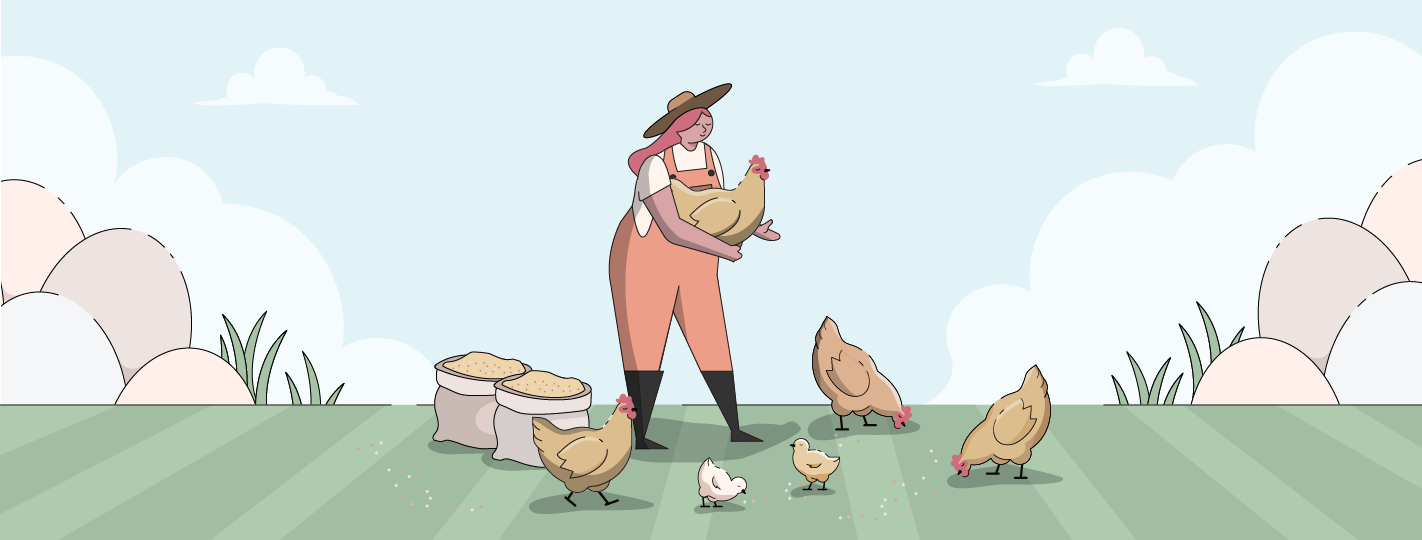

![Winter Chicken Care | Ultimate Guide [2026]](http://milefour.com/cdn/shop/articles/Mile_Four-Content-15_e1067340-1a72-4632-83f5-c66d9a2158d9.png?v=1767031296&width=1500)

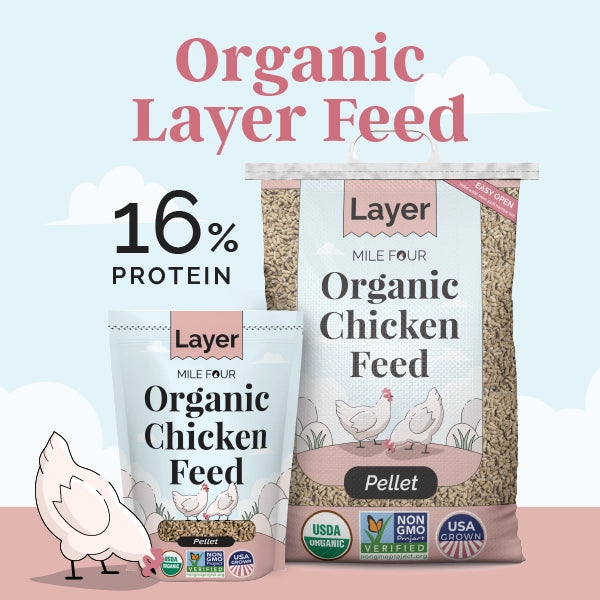
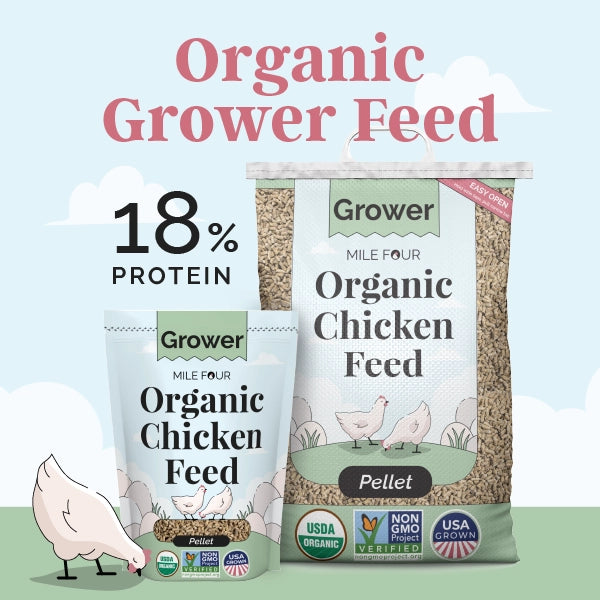
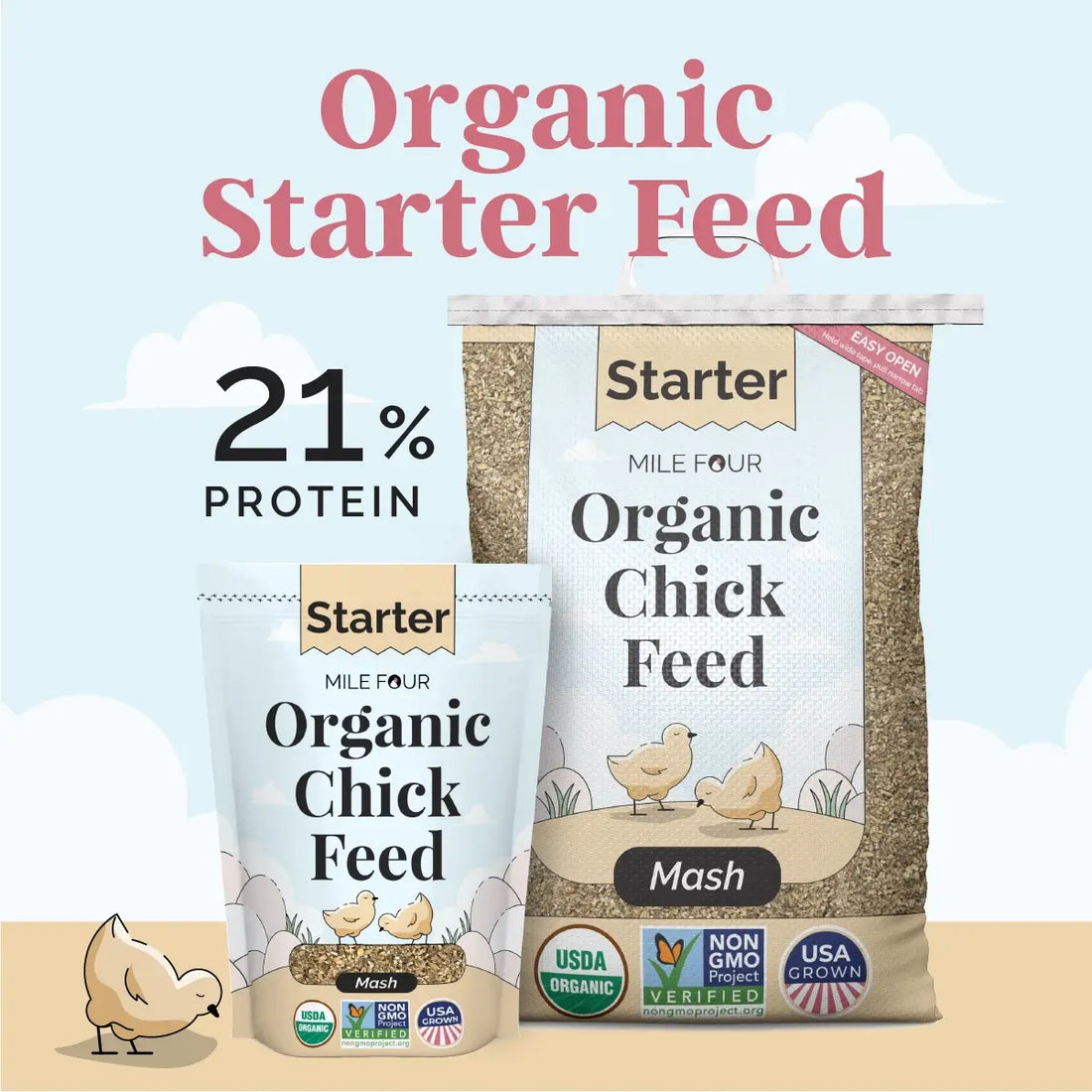
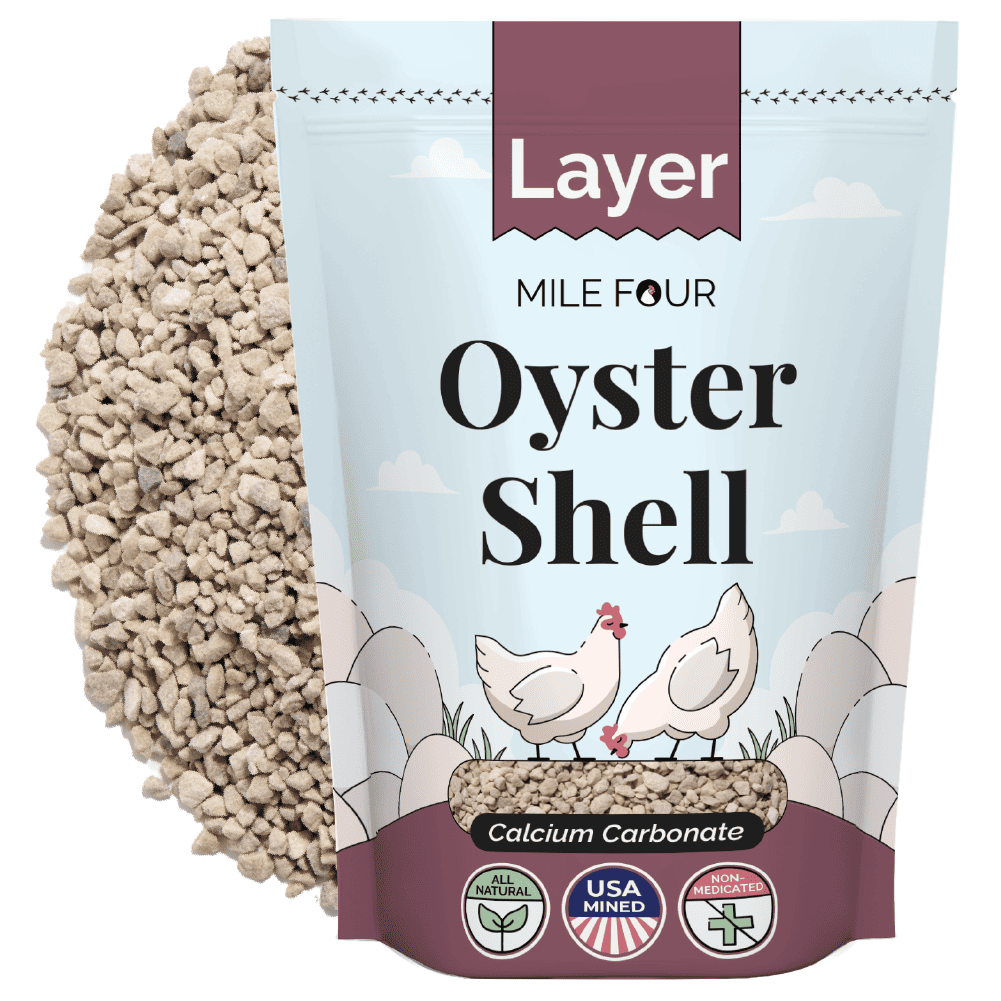
5 comments
I have read from a lot of other sources that Buff Orpingtons are very predator-savvy. Does have personal experince with Buff Orpingtons? If so is it true that they are not predator-savvy?
We are new to raising chickens. I fell in love with the docile nature of Buff Orpingtons at the breeder. They climbed right into his lap. We took home 5 five-week old pullets, and found a year-old rooster at another breeder. That rooster is taking such good care of his girls. He teaches them to eat new foods, and herds them into the coop at night. He loves to be held, and he plays nicely with the children. I am so glad we chose Buff Orpingtons!
I love Buff Orpington chickens! We had some a few years back and are just now getting more chickens, they have such a fantastic personality, friendly, docile, my favorite!
How soon can chicks be sexed? Any advice on re-homing Roos? My city won’t allow them.
Thank you
Good insights! I was planning on getting one.